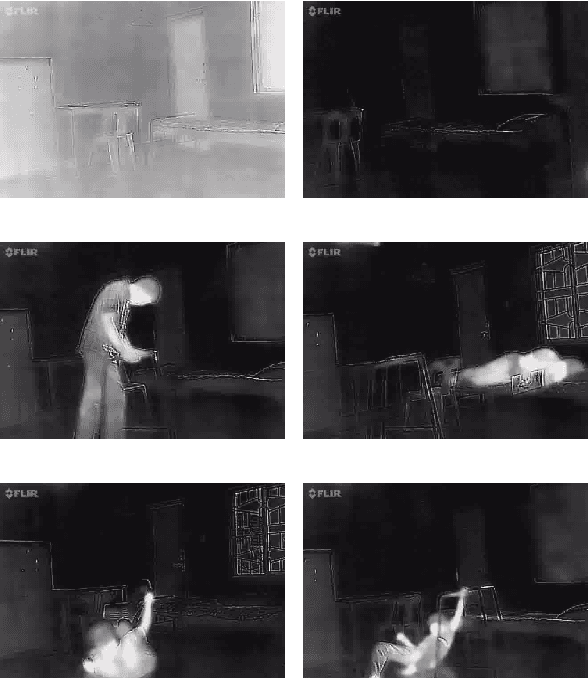Shehroz Khan
Affect-driven Engagement Measurement from Videos
Jun 21, 2021



Abstract:In education and intervention programs, person's engagement has been identified as a major factor in successful program completion. Automatic measurement of person's engagement provides useful information for instructors to meet program objectives and individualize program delivery. In this paper, we present a novel approach for video-based engagement measurement in virtual learning programs. We propose to use affect states, continuous values of valence and arousal extracted from consecutive video frames, along with a new latent affective feature vector and behavioral features for engagement measurement. Deep learning-based temporal, and traditional machine-learning-based non-temporal models are trained and validated on frame-level, and video-level features, respectively. In addition to the conventional centralized learning, we also implement the proposed method in a decentralized federated learning setting and study the effect of model personalization in engagement measurement. We evaluated the performance of the proposed method on the only two publicly available video engagement measurement datasets, DAiSEE and EmotiW, containing videos of students in online learning programs. Our experiments show a state-of-the-art engagement level classification accuracy of 63.3% and correctly classifying disengagement videos in the DAiSEE dataset and a regression mean squared error of 0.0673 on the EmotiW dataset. Our ablation study shows the effectiveness of incorporating affect states in engagement measurement. We interpret the findings from the experimental results based on psychology concepts in the field of engagement.
Motion and Region Aware Adversarial Learning for Fall Detection with Thermal Imaging
Apr 17, 2020



Abstract:Automatic fall detection is a vital technology for ensuring health and safety of people. Home based camera systems for fall detection often put people's privacy at risk. Thermal cameras can partially/fully obfuscate facial features, thus preserving the privacy of a person. Another challenge is the less occurrence of falls in comparison to normal activities of daily living. As fall occurs rarely, it is non-trivial to learn algorithms due to class imbalance. To handle these problems, we formulate fall detection as an anomaly detection within an adversarial framework using thermal imaging camera. We present a novel adversarial network that comprise of two channel 3D convolutional auto encoders; one each handling video sequences and optical flow, which then reconstruct the thermal data and the optical flow input sequences. We introduce a differential constraint, a technique to track the region of interest and a joint discriminator to compute the reconstruction error. Larger reconstruction error indicates the occurrence of fall in a video sequence. The experiments on a publicly available thermal fall dataset show the superior results obtained in comparison to standard baseline.
Learning to Unlearn: Building Immunity to Dataset Bias in Medical Imaging Studies
Dec 03, 2018
Abstract:Medical imaging machine learning algorithms are usually evaluated on a single dataset. Although training and testing are performed on different subsets of the dataset, models built on one study show limited capability to generalize to other studies. While database bias has been recognized as a serious problem in the computer vision community, it has remained largely unnoticed in medical imaging research. Transfer learning thus remains confined to the re-use of feature representations requiring re-training on the new dataset. As a result, machine learning models do not generalize even when trained on imaging datasets that were captured to study the same variable of interest. The ability to transfer knowledge gleaned from one study to another, without the need for re-training, if possible, would provide reassurance that the models are learning knowledge fundamental to the problem under study instead of latching onto the idiosyncracies of a dataset. In this paper, we situate the problem of dataset bias in the context of medical imaging studies. We show empirical evidence that such a problem exists in medical datasets. We then present a framework to unlearn study membership as a means to handle the problem of database bias. Our main idea is to take the data from the original feature space to an intermediate space where the data points are indistinguishable in terms of which study they come from, while maintaining the recognition capability with respect to the variable of interest. This will promote models which learn the more general properties of the etiology under study instead of aligning to dataset-specific peculiarities. Essentially, our proposed model learns to unlearn the dataset bias.
Relational Approach to Knowledge Engineering for POMDP-based Assistance Systems as a Translation of a Psychological Model
Jun 25, 2012



Abstract:Assistive systems for persons with cognitive disabilities (e.g. dementia) are difficult to build due to the wide range of different approaches people can take to accomplishing the same task, and the significant uncertainties that arise from both the unpredictability of client's behaviours and from noise in sensor readings. Partially observable Markov decision process (POMDP) models have been used successfully as the reasoning engine behind such assistive systems for small multi-step tasks such as hand washing. POMDP models are a powerful, yet flexible framework for modelling assistance that can deal with uncertainty and utility. Unfortunately, POMDPs usually require a very labour intensive, manual procedure for their definition and construction. Our previous work has described a knowledge driven method for automatically generating POMDP activity recognition and context sensitive prompting systems for complex tasks. We call the resulting POMDP a SNAP (SyNdetic Assistance Process). The spreadsheet-like result of the analysis does not correspond to the POMDP model directly and the translation to a formal POMDP representation is required. To date, this translation had to be performed manually by a trained POMDP expert. In this paper, we formalise and automate this translation process using a probabilistic relational model (PRM) encoded in a relational database. We demonstrate the method by eliciting three assistance tasks from non-experts. We validate the resulting POMDP models using case-based simulations to show that they are reasonable for the domains. We also show a complete case study of a designer specifying one database, including an evaluation in a real-life experiment with a human actor.
 Add to Chrome
Add to Chrome Add to Firefox
Add to Firefox Add to Edge
Add to Edge